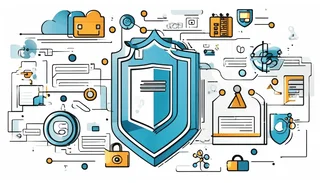Overview of the CompTIA N10-008 Exam
The CompTIA Network+ (N10-008) certification is a globally recognized credential that validates a professional’s ability to design, manage, and troubleshoot wired and wireless networks. The exam covers various networking concepts, including infrastructure, network operations, security, troubleshooting, and networking tools. One of the critical topics included in the exam is fiber optic networking, which plays a vital role in high-speed data transmission.
Preparing for the N10-008 exam requires a deep understanding of networking fundamentals and real-world applications of networking technologies. DumpsBoss provides expert-verified study materials, including exam dumps, practice tests, and comprehensive study guides, ensuring candidates have the knowledge and confidence to pass the exam on their first attempt.
Definition and Working Principle of Fiber Optic Cables
Fiber optic cables are a key component of modern networking infrastructure, providing high-speed and long-distance data transmission. Unlike traditional copper cables that transmit electrical signals, fiber optic cables use light pulses to carry data, resulting in significantly higher bandwidth and lower signal degradation over long distances.
A fiber optic cable consists of three main components:
-
Core – The central part of the cable where light travels.
-
Cladding – A layer surrounding the core that reflects light back into the core to maintain signal integrity.
-
Buffer Coating – An outer protective layer that prevents damage from environmental factors.
Fiber optic communication operates on the principle of total internal reflection. When light enters the fiber core at a specific angle, it bounces off the cladding repeatedly, allowing it to travel long distances with minimal loss. This principle enables the transmission of large amounts of data at extremely high speeds, making fiber optics the backbone of modern telecommunication and networking systems.
The Need for Two Strands in Fiber Optic Connections
Most fiber optic connections require two strands of fiber—one for transmitting data and the other for receiving it. This duplex configuration ensures full-duplex communication, allowing data to be sent and received simultaneously without interference. The primary reasons for using two strands in fiber optic connections include:
-
Bidirectional Communication – By having separate fibers for transmission and reception, networks can achieve simultaneous two-way communication, improving efficiency and performance.
-
Minimizing Signal Interference – Using separate fibers for sending and receiving signals reduces crosstalk and interference, ensuring clear and accurate data transmission.
-
Enhanced Data Throughput – Duplex fiber configurations maximize bandwidth utilization, enabling higher data rates for applications like video streaming, cloud computing, and high-performance networking.
Understanding why fiber optic connections typically require two strands is essential for IT professionals preparing for the CompTIA N10-008 exam. DumpsBoss provides in-depth study materials and real-world examples to help candidates grasp this concept effectively.
Exceptions: Single-Strand Fiber (Bi-Directional Transmission)
While most fiber optic connections use two strands, there are exceptions where a single strand can be used for bi-directional transmission. This is achieved using Wavelength Division Multiplexing (WDM), a technology that allows multiple data streams to be transmitted simultaneously over different wavelengths of light on the same fiber strand.
Advantages of single-strand fiber (bi-directional transmission) include:
-
Cost Efficiency – Reducing the number of fiber strands required lowers installation and maintenance costs.
-
Optimal Use of Fiber Resources – Single-strand fiber is beneficial in environments with limited fiber availability, such as underground or long-distance deployments.
-
Efficient Network Design – Certain network infrastructures, such as Passive Optical Networks (PONs) used in Fiber-to-the-Home (FTTH) deployments, leverage single-strand fiber to optimize performance and cost.
However, single-strand fiber solutions require specialized equipment and careful wavelength management to avoid signal interference. Candidates preparing for the N10-008 exam must be familiar with both duplex and single-strand fiber configurations, which DumpsBoss covers comprehensively in its study materials.
Real-World Applications of Two-Strand Fiber Connections
Two-strand fiber optic connections are widely used in various industries and applications where high-speed, reliable communication is essential. Some key applications include:
-
Data Centers – Large-scale data centers use fiber optic connections to interconnect servers, storage devices, and networking equipment, ensuring high-speed data transfer and minimal latency.
-
Telecommunications – Internet service providers (ISPs) and telecommunications companies rely on fiber optic backbones for long-distance and high-bandwidth data transmission.
-
Enterprise Networks – Businesses use fiber optic networks to connect different office locations, providing secure and high-speed communication between branches.
-
Healthcare – Hospitals and research institutions use fiber optics for telemedicine, high-resolution imaging, and real-time data sharing.
-
Smart Cities – Urban infrastructure projects integrate fiber optic networks to support IoT devices, traffic management systems, and public safety applications.
Understanding these real-world applications is crucial for passing the CompTIA N10-008 exam and excelling in IT careers. DumpsBoss offers practical insights and scenario-based exam questions to help candidates apply their knowledge effectively.
Conclusion
Fiber optic technology is a fundamental topic in the CompTIA N10-008 exam, making it essential for IT professionals to understand its principles, configurations, and real-world applications. The widespread use of two-strand fiber optic connections ensures high-speed, reliable, and interference-free communication across industries.
Candidates preparing for the N10-008 exam can benefit from DumpsBoss’s extensive collection of study materials, including exam dumps, practice tests, and expert guidance. With DumpsBoss, aspiring networking professionals can confidently master fiber optics and other networking concepts, increasing their chances of passing the exam and advancing their careers in the IT industry.
Special Discount: Offer Valid For Limited Time “N10-008 Exam” Order Now!
Sample Questions for CompTIA N10-008 Dumps
Actual exam question from CompTIA N10-008 Exam.
Why are two strands of fiber used for a single fiber optic connection?
A) To provide redundancy in case one strand fails
B) One strand is for transmitting data, and the other is for receiving data
C) To increase the data transmission speed
D) To reduce signal attenuation over long distances


